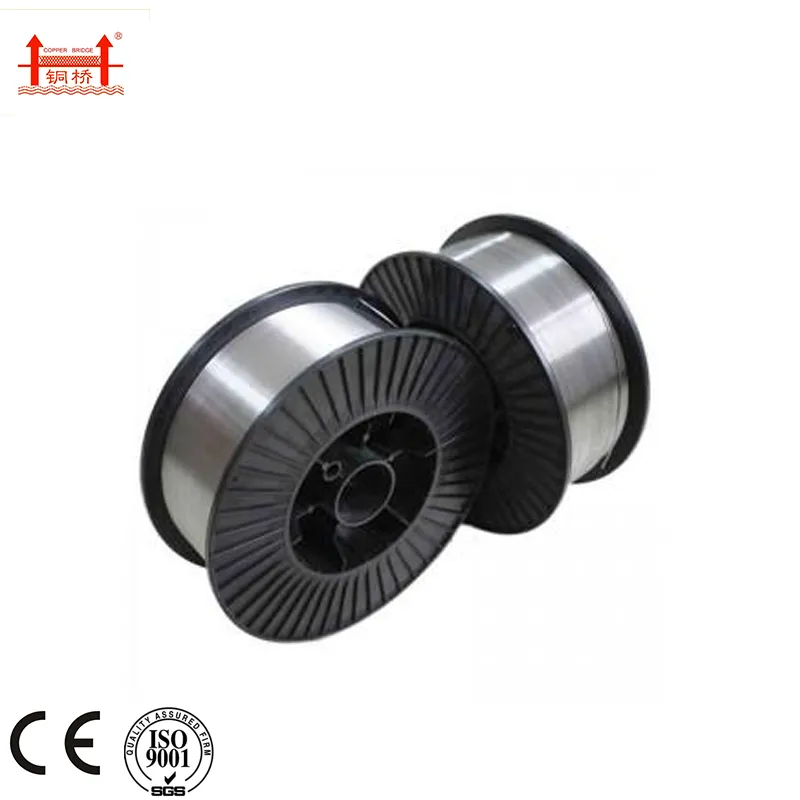selection of electrode in welding
Jan . 14, 2025 10:09
Electrode selection is a pivotal part in achieving superior welding results. For experienced welders and newbies alike, understanding the nuances of electrode choices ensures not only optimal performance but also the safety and durability of the welded project. A deep dive into this technical yet critical aspect of welding unveils the key elements that any professional should consider when selecting the right electrode.
The working environment strongly dictates electrode choice as well. Outdoor projects might expose welds to the elements, making cellulose-coated rods such as E6010 advantageous for their ability to withstand windy conditions without excessive spatter or slag. Conversely, in a controlled indoor environment where aesthetics matter, rutile-coated electrodes like E7014 can provide a cleaner finish. Expertise in electrode selection extends beyond avoiding defects; it enhances performance. A mischosen electrode could lead to poor weld quality, increasing susceptibility to cracking or porosity. Therefore, professionals must evaluate electrodes’ characteristics, such as tensile strength, usability, and the specific welding position, to circumvent potential failures. This is where established guidelines from authoritative bodies, such as the American Welding Society, become vital resources in ensuring compliance and excellence. Trust in electrode brands forms another layer of selection criteria. Renowned manufacturers subject their products to rigorous quality control, providing a guarantee of performance consistency. The market offers an extensive range of electrodes, each promising distinctive features; however, welding experts often rely on trusted brands, acknowledging their contributions to successful projects globally. In conclusion, the right electrode selection is a fusion of material compatibility, environmental considerations, and product reliability. Skilled welders leverage these facets, drawing on experience and technical knowledge to enhance project outcomes. Mastery of electrode dynamics doesn't just come from academic understanding but also from hands-on application and continuous research, shaped by innovations within the welding sphere. As welding technology evolves, staying abreast of emerging electrode formulations will enable practitioners to push the boundaries of what's possible, guaranteeing not just competence but also craftsmanship in every weld produced.


The working environment strongly dictates electrode choice as well. Outdoor projects might expose welds to the elements, making cellulose-coated rods such as E6010 advantageous for their ability to withstand windy conditions without excessive spatter or slag. Conversely, in a controlled indoor environment where aesthetics matter, rutile-coated electrodes like E7014 can provide a cleaner finish. Expertise in electrode selection extends beyond avoiding defects; it enhances performance. A mischosen electrode could lead to poor weld quality, increasing susceptibility to cracking or porosity. Therefore, professionals must evaluate electrodes’ characteristics, such as tensile strength, usability, and the specific welding position, to circumvent potential failures. This is where established guidelines from authoritative bodies, such as the American Welding Society, become vital resources in ensuring compliance and excellence. Trust in electrode brands forms another layer of selection criteria. Renowned manufacturers subject their products to rigorous quality control, providing a guarantee of performance consistency. The market offers an extensive range of electrodes, each promising distinctive features; however, welding experts often rely on trusted brands, acknowledging their contributions to successful projects globally. In conclusion, the right electrode selection is a fusion of material compatibility, environmental considerations, and product reliability. Skilled welders leverage these facets, drawing on experience and technical knowledge to enhance project outcomes. Mastery of electrode dynamics doesn't just come from academic understanding but also from hands-on application and continuous research, shaped by innovations within the welding sphere. As welding technology evolves, staying abreast of emerging electrode formulations will enable practitioners to push the boundaries of what's possible, guaranteeing not just competence but also craftsmanship in every weld produced.
Related Video
Copyright © 2025 Dingzhou Jinlong Metal Production Co., Ltd. All Rights Reserved. Sitemap | Privacy Policy




























